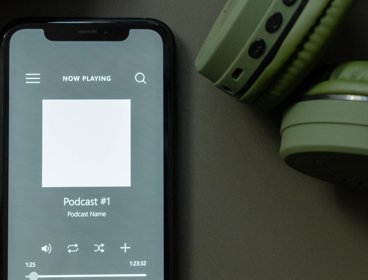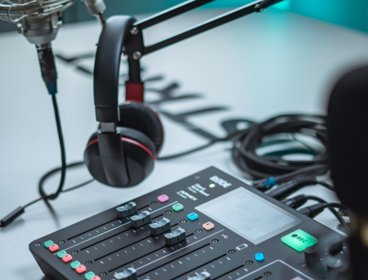By Raksha Pande, Newcastle University
At the global level, radio remains one of the most trusted and widely consumed means of communication (Unesco, 2022). In the UK, at least nine in ten people (88.8%) listen to the radio at least once a week (RAJAR, 2022). Doing an interview on the radio to share your research is a powerful way of communicating your work to a public audience.
In this short piece, I will share my experiences and tips of doing radio interviews for the BBC and for a community radio station.
In order to feature on the radio, you need to first start by using already established channels in your institution to advertise your research findings. A press release that targets key media outlets is the first step in getting your research noticed. Presenting your research in flagship disciplinary conferences such as the RGS-IBG annual conference and the conference of the British Sociological Association (BSA) is another way of publicising your work as they can often feature ‘live’ radio broadcasts covered by BBC Radio 4 for example. Your institution’s press office and your publisher may also mobilise existing contacts within the radio media sector to share your research.
Once you have secured a radio interview, the preparation varies slightly, depending on whether it is a ‘live’ or ‘recorded’ broadcast. In both the cases, however, you will have a pre-broadcast meeting with an editor or producer where they will go through the format of the programme and the content. For example, when participating in a panel discussion – you will be informed about the other panellists’ affiliations, a ‘rough’ running order of the questions will be shared and the editorial rules and guidelines of the station regarding language and syntax may also be highlighted. It is important to use this meeting to find out as much as you can about the process, especially if it is the first time that you are appearing on the radio. Knowing what to expect on the day of the broadcast/recording will help you then to focus on the substantive content of your talk. It is in this meeting that you should also specify your affiliation and how you would like to be addressed, don’t assume that the producers will be familiar with university/research conventions and job titles.
For a live broadcast, it is always helpful to gather your thoughts in a logical format using the indicative questions provided beforehand so that you can avoid rambling or going off point. Live interviews rarely last more than 5 minutes so focus on being succinct, clear and free of jargon. During the broadcast, which could be in the media studio or via a web-conferencing platform such as Zoom, make sure you listen carefully to the questions and answer using your expertise. It may also be useful to specify what your research did not cover to counter journalistic tendencies to focus on the controversial and sensational in search of a sound-bite. Academic research doesn’t always lead to easy soundbites without sacrificing nuance, but speaking in clear, short sentences and using examples and analogies can help in communicating your points effectively. If your research involves numerical data, translate them into percentages and ratios and have then written down for reference to avoid misquoting figures during the interview. Because of the nature of live radio, there is no opportunity to retract or clarify what you have shared but sticking to the core messages of your research will help you to avoid any embarrassing faux-pas. However, for a pre-recorded broadcast, you will have that opportunity, you can ask the editor to share the ‘rough cut’ of the programme before it is broadcast to make sure that the editing process hasn’t compromised the context or nuance of your argument. You can also ask to re-record sections if needed.
After the broadcast, it is common to be approached by people, who heard you on the radio, to comment, reflect and critique on your research. In my experience, this can be one of the most challenging parts of the process of sharing your research outside of the relatively civil confines of the university. This is because of the nature of the topics I cover in my research. Immigration, arranged marriages and gender relations are all topics on which the general public has strong opinions and their response to my research findings (especially if it disrupts conventional knowledge) can lead to hostile reactions. Depending on the mode of contact (I usually receive emails), you can choose to respond to selected message and just acknowledge the others as comments. You can ignore hostile and ad-hominem messages. If contacted via social media, where the exchange could be public, directing the inquirer to your research paper/book for more detail is usually a good idea.
Lastly, I have refrained from giving tips on ‘how to sound’ on the radio – you don’t need lessons in voice training and received pronunciation. If the power of radio lies in its ability to reach a diversity of audience, then we need to hear a diversity of voices in all the varying inflections of speech, accent, awkward pauses and the 'uhms' and 'ahs' that give a glimpse of the speaker’s heritage without flattening it into a standard ‘radio voice’.
How to cite
Pande, R. (2023) Doing a radio interview. Communicating research beyond the academy. Royal Geographical Society (with IBG) Guide. Available at: https://doi.org/10.55203/ZTTU7381
About this guide
There’s a long tradition of geographers communicating research ‘beyond the academy’ - to policy, to publics, to young people, to school teachers - whether to recruit students, for career development, critical praxis and activism, or requirements of funders to document ‘impact’. Ten years ago we published the Communicating Geographical Research Beyond the Academy guide. It sought to bring together and share collective experience and learning, from within and beyond the academy. Today, there’s ever more opportunities and modes and media with which to do this. While many of the points made – about audience, about access, about brevity and the use of plain English – still stand, this collection covers these already familiar issues as well as bringing new perspectives to encourage readers to reflect on motives, means and methods and to illuminate examples of good practice.




